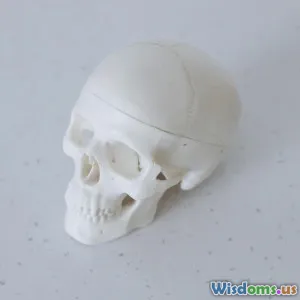
Strength Training After 40 Tips to Maintain Bone Health
7 min read Discover effective strength training tips after 40 to boost bone health and combat age-related bone loss. (0 Reviews)
Strength Training After 40: Essential Tips to Maintain Bone Health
As we age, maintaining bone health becomes a critical health priority, particularly after age 40 when bone density naturally begins to decline. Osteoporosis affects nearly 54 million people in the United States alone, especially those over 50, leading to fragile bones and increased risk of fractures. But there is hope — strength training, when done correctly, is a powerful, science-backed tool to stave off bone loss and keep you resilient and strong.
In this comprehensive guide, we’ll unveil targeted strength training strategies specifically tailored for individuals over 40, empowering you to foster bone strength, improve balance, and enjoy a higher quality of life.
Why Focus on Bone Health After 40?
Around the age of 40, bone remodeling begins to favor resorption over formation, resulting in a gradual decrease in bone mineral density (BMD). This natural decline puts middle-aged and older adults at risk for conditions such as osteoporosis and fractures, which can significantly impact mobility and independence.
Dr. Jane Brody, a renowned health journalist, notes, “Empirical evidence strongly supports that bone mass can be preserved — and even increased — with appropriately designed weight-bearing exercises.” Thus, strength training isn’t just for younger athletes; it’s an essential intervention in midlife and beyond.
How Strength Training Benefits Bone Health
1. Stimulates Bone Formation
Mechanical stress from muscle contractions during strength training signals osteoblasts—the bone-building cells—to increase bone formation. This results in thicker, denser bones. Studies indicate that resistance training increases BMD by 1-3% annually in postmenopausal women—a significant figure considering bone loss rates of 1-3% per year without intervention.
2. Improves Muscle Mass & Strength
Muscle strength supports joint stability and bone support structures, helping prevent falls and fractures—a principal cause of morbidity in older adults. According to the National Osteoporosis Foundation, improved muscle mass directly correlates with reduced fracture risk.
3. Enhances Balance and Coordination
Strength training exercises also challenge balance and enhance proprioception, thus reducing the risk of falls, a leading cause of broken bones over age 60.
Top Strength Training Tips to Maintain Bone Health After 40
1. Prioritize Weight-Bearing and Resistance Exercises
Incorporate exercises that force your bones to work against gravity. Examples include:
- Squats: Engage hips, legs, and core, stressing femur and pelvic bones.
- Deadlifts: Load spine and leg bones, enhancing vertebral strength.
- Lunges: Focus on lower-body strength and balance.
- Push-ups and Bench Press: Work on upper-body and arm bones.
2. Start Gradually and Focus on Proper Technique
If new to strength training after 40, consult a fitness coach or physical therapist. Using poor technique or lifting excessively heavy weights can lead to injury or stress fractures. Begin with bodyweight movements or light resistance and progress incrementally.
3. Frequency and Consistency Matter
Aim for 2-3 strength training sessions per week, allowing adequate recovery between workouts. Research shows consistent exercise over months is required to induce measurable improvements in bone density.
4. Include Functional Movements
Functional exercises mimicking everyday tasks improve overall mobility and safety. Examples:
- Carrying groceries
- Climbing stairs
- Getting up from a chair
Dr. Michael Joyner, a sports medicine expert, emphasizes, "Training that improves real-world functionality addresses multiple injury risk factors and promotes independence."
5. Don’t Neglect Nutrition and Lifestyle
Strength training is just one pillar of bone health. Calcium and vitamin D intake are essential. Adults over 40 should consume 1,000-1,200 mg of calcium daily and optimize vitamin D levels through sunlight and/or supplementation.
- Avoid smoking and limit alcohol consumption, as both adversely affect bone remodeling.
6. Monitor Bone Health Regularly
Schedule bone density tests (DEXA scans) as clinically recommended. Tracking your bone health can help tailor your training program and nutritional strategies.
Real-World Example: Linda’s Strength Training Journey After 40
Linda, age 45, was diagnosed with osteopenia during a routine exam. Concerned about worsening bone loss, she embraced a doctor-recommended strength training regimen focusing on weighted squats, lunges, and upper body resistance exercises three times a week. Over 12 months, her follow-up DEXA scan revealed a 2% improvement in femoral neck BMD. In addition to better bone health, Linda reported increased energy and improved balance.
Potential Pitfalls to Avoid
- Overtraining: Excessive high-impact or repetitive strain exercises can lead to stress fractures.
- Ignoring pain: Bone or joint pain during exercises should be evaluated immediately.
- Skipping warm-ups: Warming muscles and joints reduces injury risks and enhances performance.
Consulting healthcare professionals, such as orthopedic specialists or certified trainers with experience in older adults, ensures safe progression.
Conclusion: Empower Your Bones for Longevity
Strength training after 40 is much more than building muscles; it’s about building a resilient skeletal system that supports a vibrant, active life. By combining weight-bearing exercises, proper technique, nutritional support, and regular medical monitoring, you lay a solid foundation against bone degeneration.
Remember, it’s never too late to invest in your health. Start today—your bones will thank you tomorrow and for decades to come.
References:
- National Osteoporosis Foundation
- Brody, Jane. "Good Bone Health: Exercise and Nutrition". The New York Times.
- Journal of Bone and Mineral Research, 2019, Resistance Training for Bone Health
- American College of Sports Medicine Position Stand, 2021
Rate the Post
User Reviews
Popular Posts
















